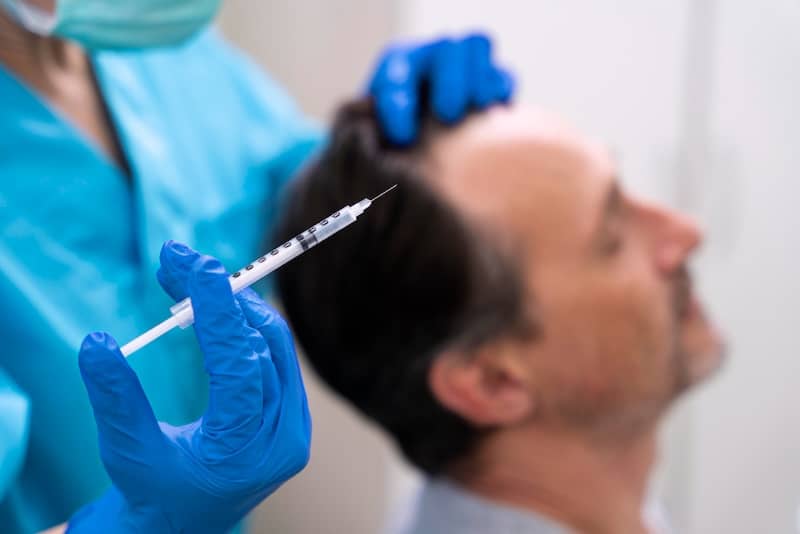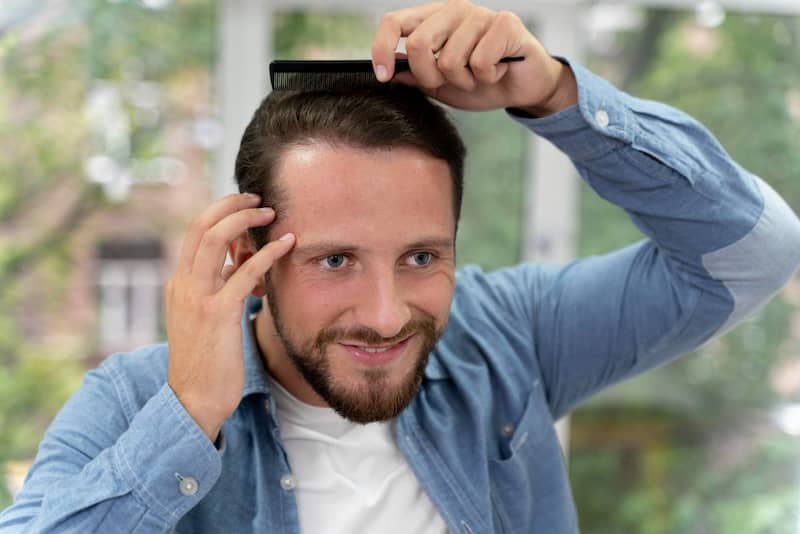
5 Common Mistakes to Avoid When Restoring Your Receding Hairline
You probably never thought about your hairline until it started to recede, and then it was all you could think about. A receding hairline can lead to a loss of confidence and poor self-image. Hair restoration often feels like the natural step toward reclaiming a youthful appearance. However, hairline restoration requires careful planning, professional guidance, and realistic expectations.
Many people make avoidable mistakes when pursuing receding hairline restoration, resulting in unsatisfactory outcomes, wasted money, or even damage to their hair and scalp. Don’t be one of them. With numerous treatments available, from surgical transplants to non-invasive therapies, approach your hair restoration with an informed mindset.
Here are some of the most common mistakes to avoid when restoring your receding hairline.
1. Choosing the Wrong Hair Restoration Clinic
The success of hairline restoration depends on the expertise of the clinic and the specialists performing the treatment. You need to do your research.
It is easy to be drawn to clinics that advertise low-cost procedures. But often, these clinics lack experienced hair restoration specialists or use outdated techniques. Some clinics even operate without proper certification, putting patients at risk for subpar results, scarring, or infections.
Evaluate the credentials of any clinic you are considering. Research the qualifications of the specialists, read patient reviews, and request before-and-after photos of previous clients. A reputable clinic will be transparent about its procedures, expected outcomes, and any potential risks.
Another key factor is the technology used. Modern advancements in hair restoration—such as SmartGraft and follicular unit extraction (FUE)—offer minimally invasive solutions with natural-looking results. If a clinic is still relying on outdated strip harvesting methods or lacks modern equipment, it may not be the best choice for achieving the hairline you desire.
2. Falling for Quick Fixes and Unproven Treatments
The hair restoration industry is full of bold claims and misleading advertisements. Over-the-counter products, miracle serums, and unverified hair growth supplements are commonly marketed as solutions for hair regrowth. Don’t fall into the trap of quick-fix treatments that promise instant results, they often fail to deliver lasting benefits.
Another risky approach is undergoing procedures in non-specialized beauty clinics or overseas centers that do not adhere to high medical standards. Pursuing low-cost hair transplants in unregulated clinics can result in complications, such as unnatural hairlines, poor graft survival rates, or permanent scalp damage.
Consulting experienced hair restoration specialists before choosing a treatment plan is key. They can provide medically sound recommendations tailored to your hair loss pattern, scalp health, and genetic factors.
3. Expecting Immediate Results Without a Long-Term Plan
Unfortunately, hair restoration is not an overnight process. Whether you opt for non-surgical treatments, medications, or a full hair transplant, patience is crucial. Immediate regrowth is not a reasonable expectation.
Hair regrowth follows a natural cycle, and it can take several months before new hair fully grows in and thickens.Newly transplanted follicles go through a phase known as “shock loss,” where the transplanted hairs initially fall out before new growth begins. This is completely normal but can cause concern for those unfamiliar with the process.
To achieve the best outcome, it’s essential to follow a long-term hair restoration plan. This may include:
- Multiple follow-up sessions with your care team to monitor progress and adjust treatments as needed.
- Ongoing use of clinically approved medications or therapies to maintain results and prevent future hair loss.
- Lifestyle changes that support hair health, such as a balanced diet, stress management, and scalp care routines.
By setting realistic expectations and committing to a structured restoration plan, you can ensure the best possible results over time.
4. Ignoring the Importance of Aftercare
Your hair restoration journey doesn’t end once your procedure is complete; aftercare is just as crucial as the treatment itself. Neglecting post-treatment care can significantly impact the success of the procedure and lead to complications such as infection, poor graft retention, or unnatural-looking results.
Aftercare guidelines typically include avoiding direct sun exposure, excessive sweating, and vigorous physical activity for several weeks. It’s also essential to follow the clinic’s scalp care recommendations, which may involve using specific shampoos and avoiding certain hair products that could interfere with healing.
Even non-surgical treatments require consistent maintenance. Low-level laser therapy, PRP (platelet-rich plasma) injections, and prescription medications work best when used regularly and as directed. Skipping treatments or stopping medications prematurely can lead to hair loss, undoing the progress made through initial restoration efforts.
Your Dallas hair restoration clinic will provide detailed aftercare instructions and support to ensure you get the most from your treatment.
5. Selecting the Wrong Hairline
Your hairline is unique, and restoring it requires careful consideration. Avoid choosing a new hairline that is too low, too straight, or unnatural for your facial structure.
A skilled hair restoration specialist will consider several factors when designing your new hairline, including the following:
- The natural shape of your face to ensure that the restored hairline complements your features.
- The progression of hair loss over time, to create a look that will age naturally.
- The density and distribution of transplanted hair to achieve a seamless and realistic result.
An overly aggressive hairline that is too low on the forehead can look unnatural as a person ages, and a hairline that is too perfectly symmetrical can appear artificial. By working closely with a trusted specialist, you can achieve a natural and aesthetically pleasing result.
Approach Hairline Restoration with Care
Restoring a receding hairline is a life-changing decision. It requires careful planning and informed choices. Choosing the wrong clinic, falling for quick fixes, ignoring aftercare, or expecting immediate results can be costly mistakes.
By partnering with experienced hair restoration specialists and following a structured, medically guided approach, you can achieve natural, long-lasting results that restore not just your hair—but your confidence as well.
Stop thinking about what is wrong with your hairline and start thinking about how to make it right. Do your research, avoid common mistakes, and start your journey to regaining a full, healthy hairline.
FAQs
1. What is the best method for receding hairline restoration?
2. How long does it take to see results from a hair restoration procedure?
3. Do hair restoration treatments work permanently?
4. Can a bad hair transplant be fixed?
5. Is hair restoration painful?
6. How much does hairline restoration cost?
7. Does stress cause a receding hairline?
8. What age is too young for hair restoration?
9. Will my transplanted hair continue to grow like natural hair?
Are you ready for your SmartGraft hair restoration journey with AdvancedYOU?
Hair Restoration in Dallas by AdvancedYOU is the Highest quality Hair Transplants for men and women in Dallas, TX. Restore your hair today!
Call or text us today at 214-949-4195for your confidential consultation. Let the most reputable provider in the country, SmartGraft master trainer Tony Bernal, restore your hair and self-confidence.












